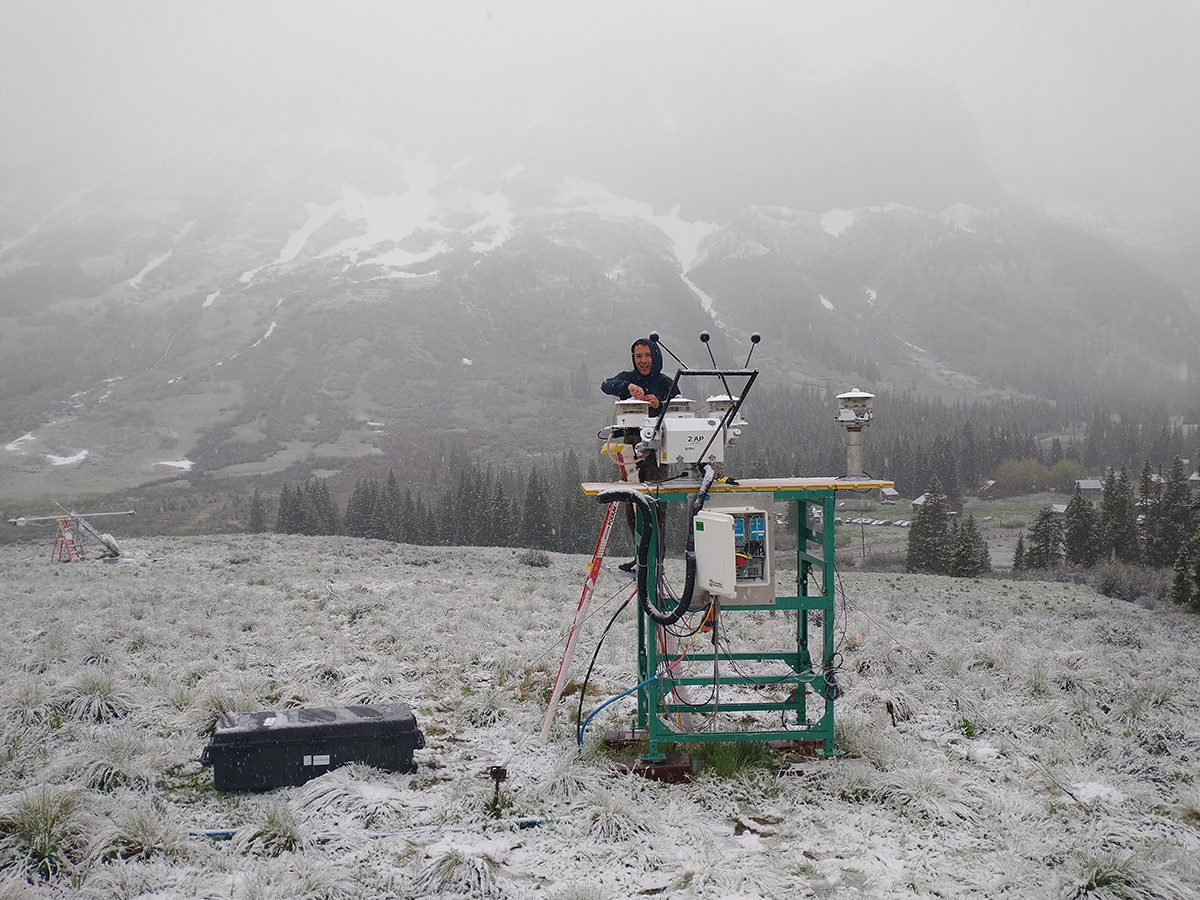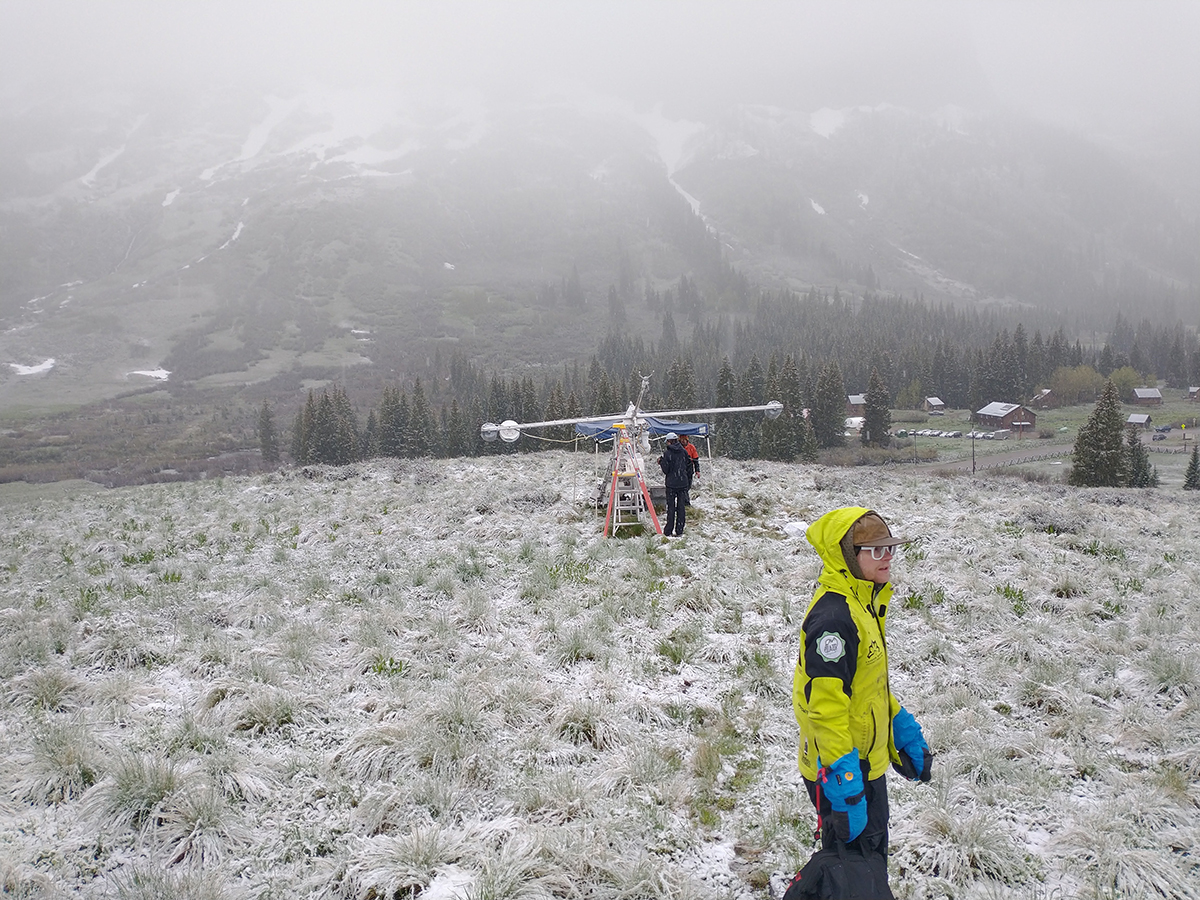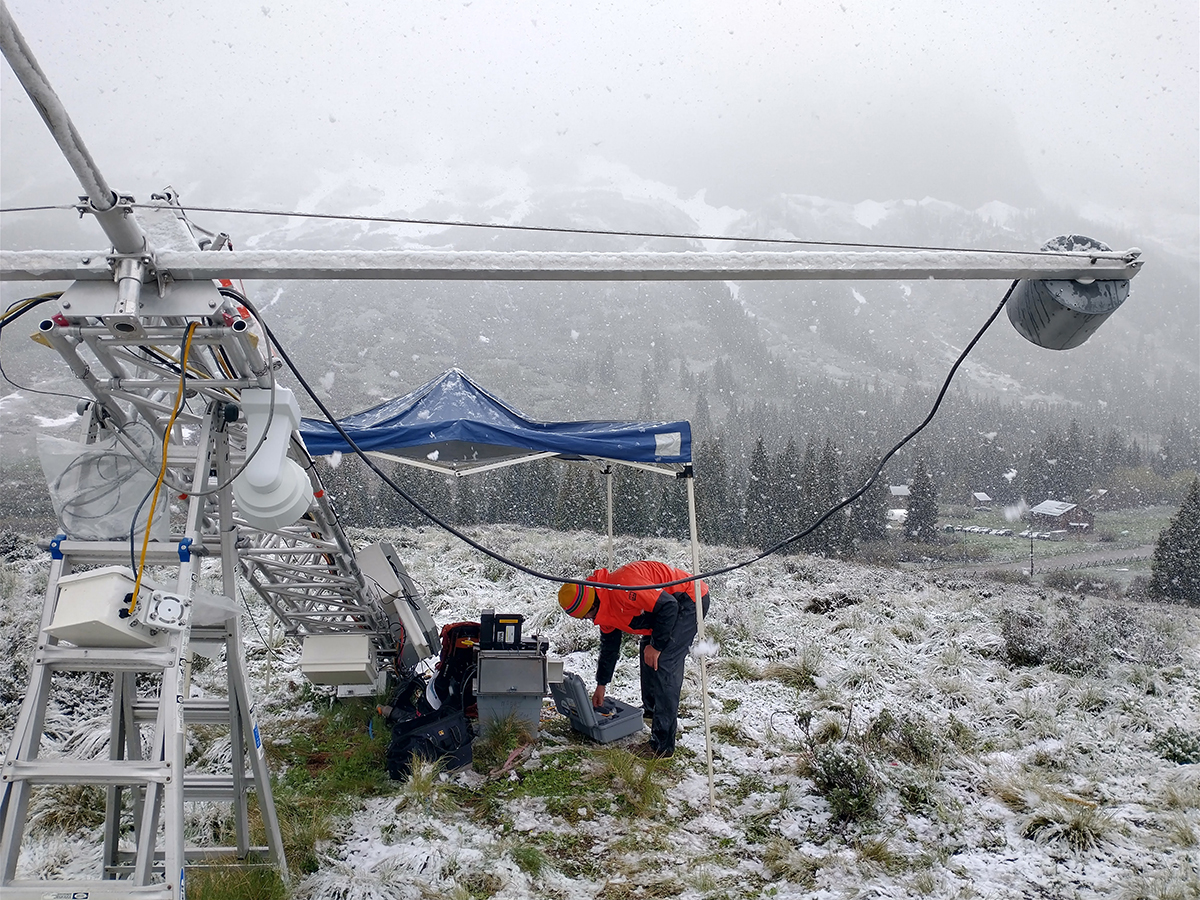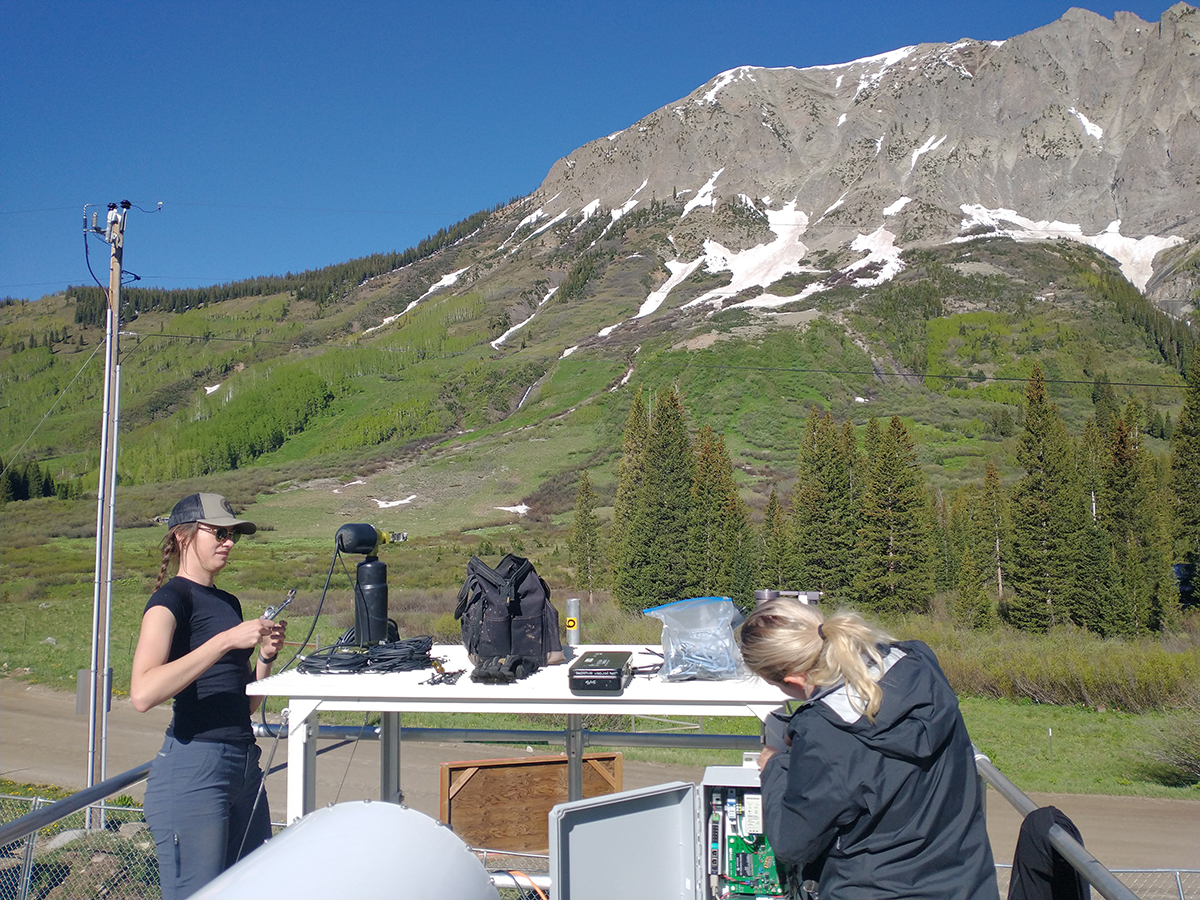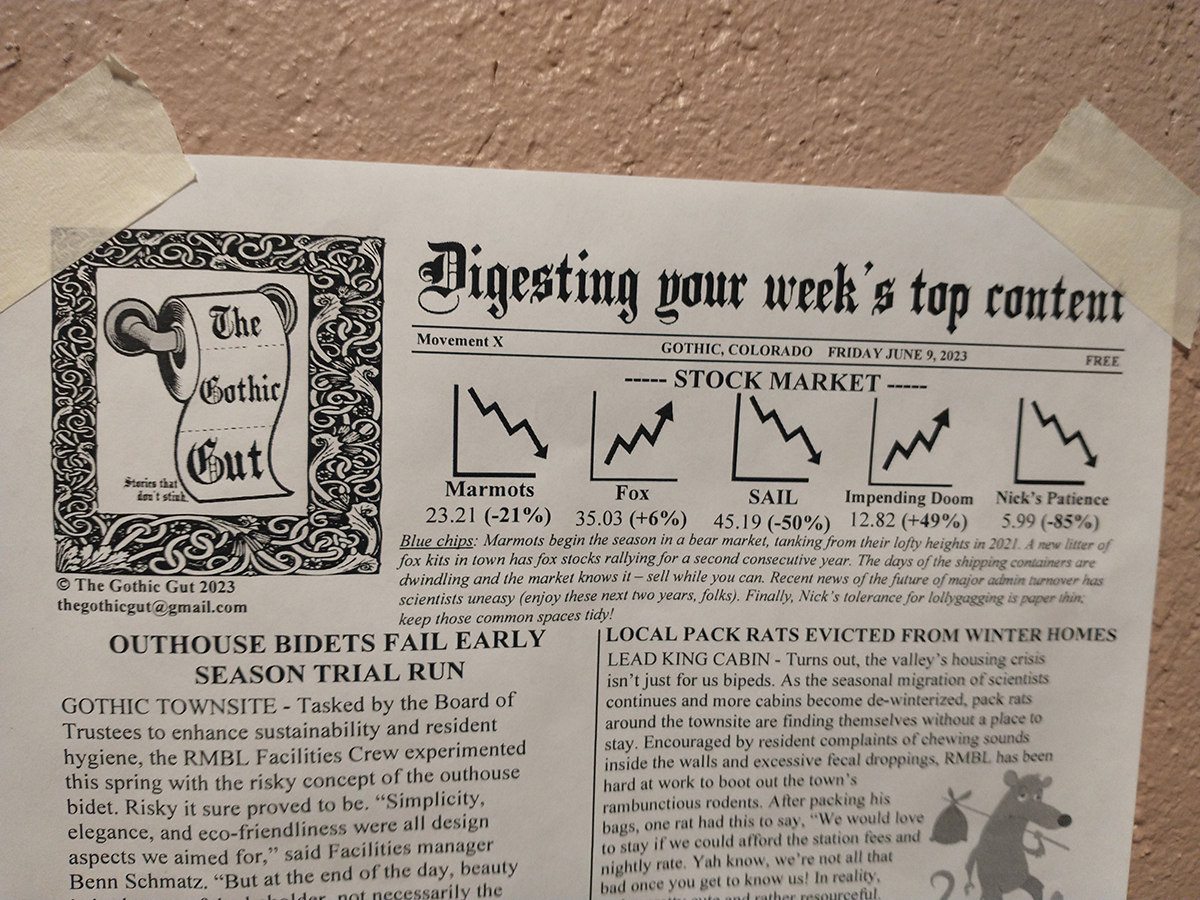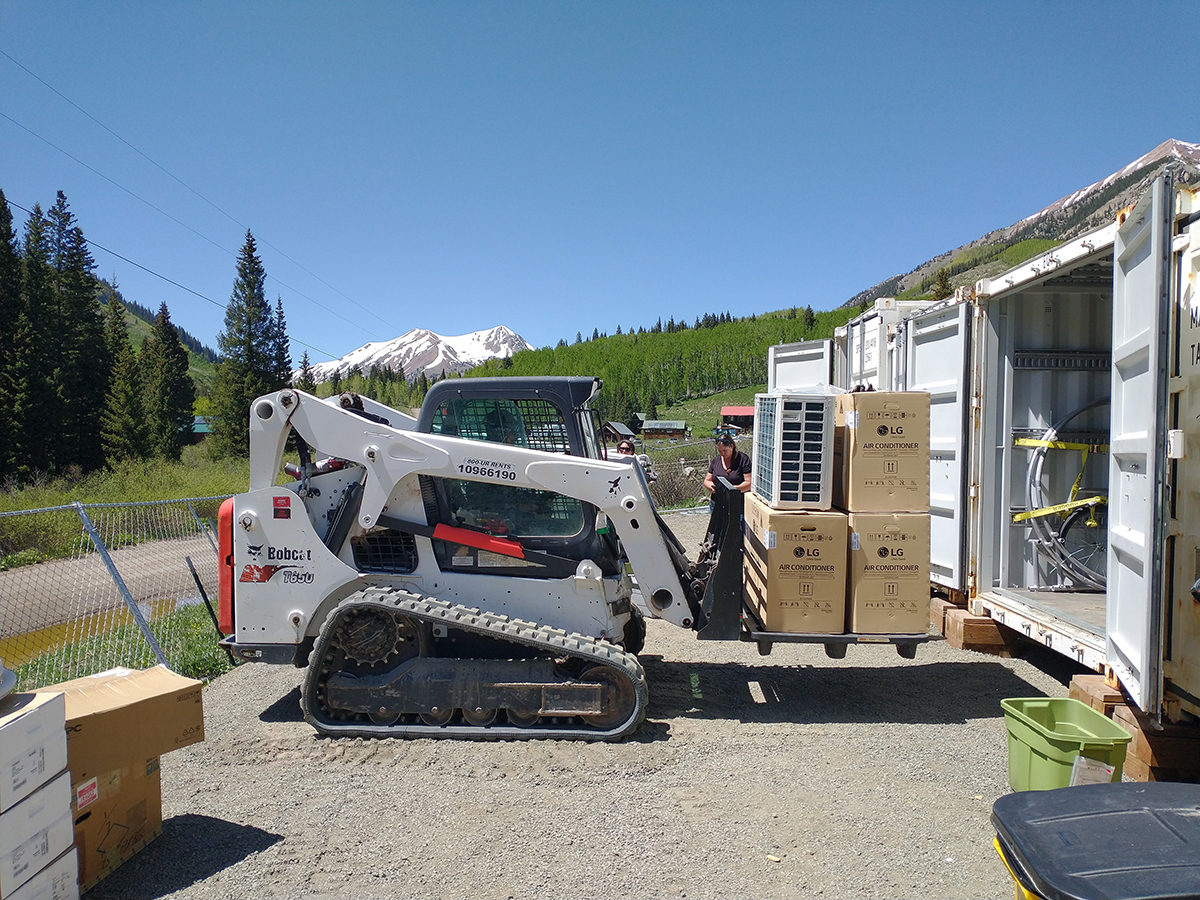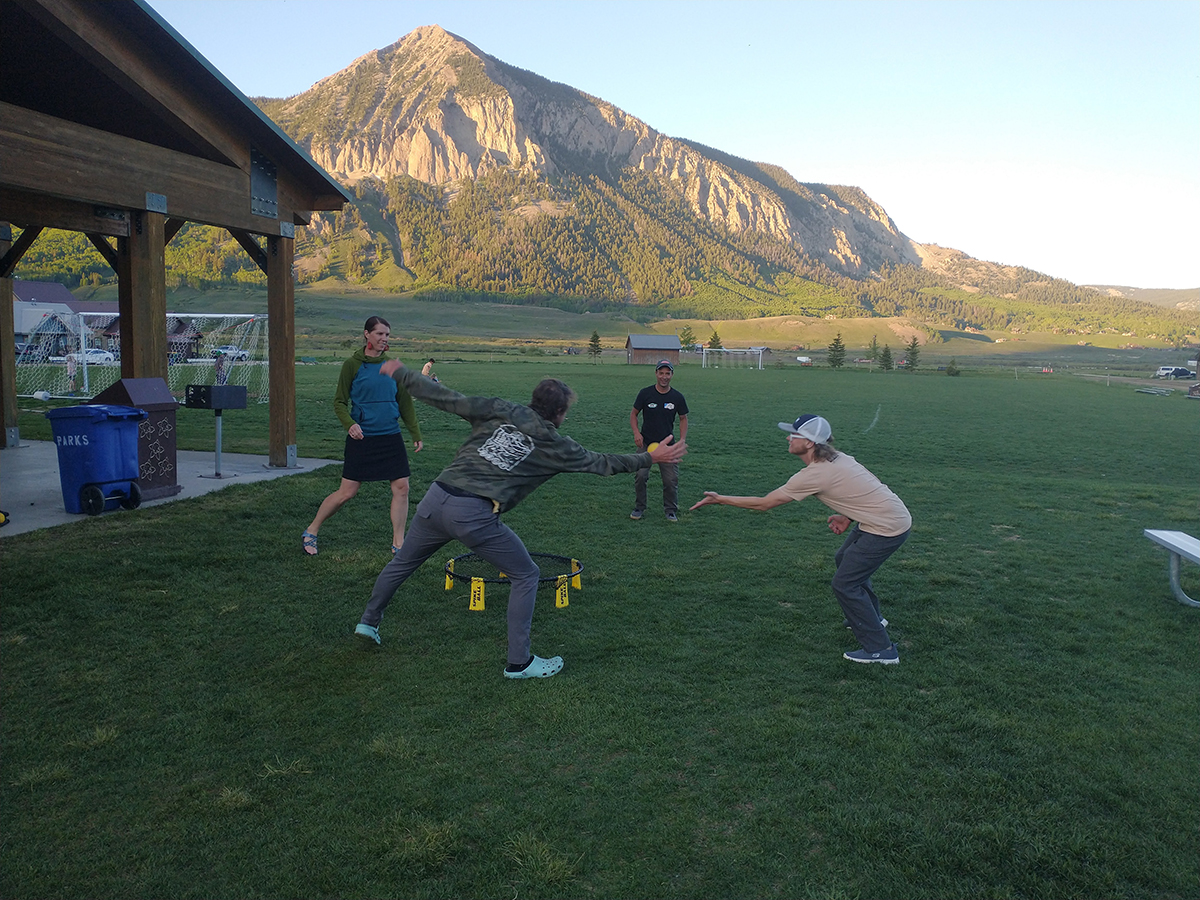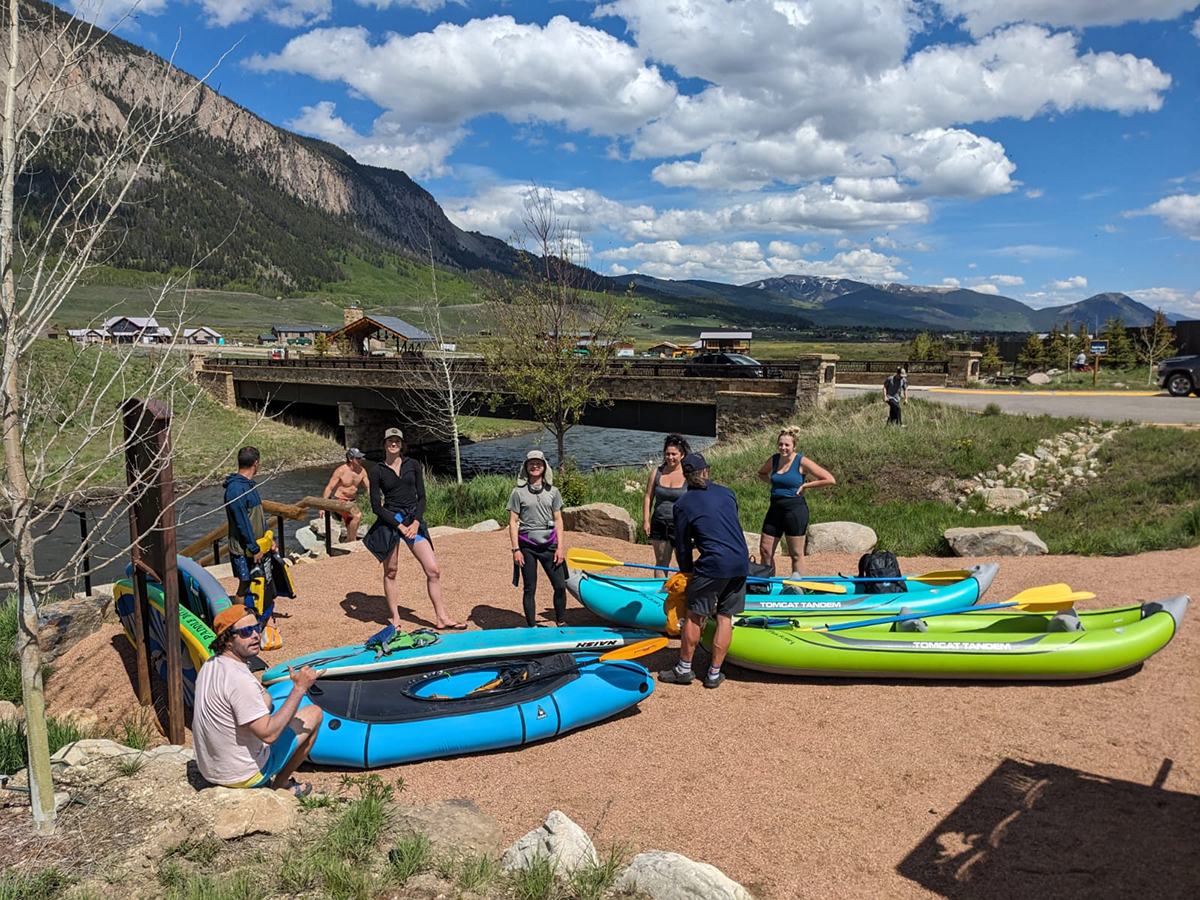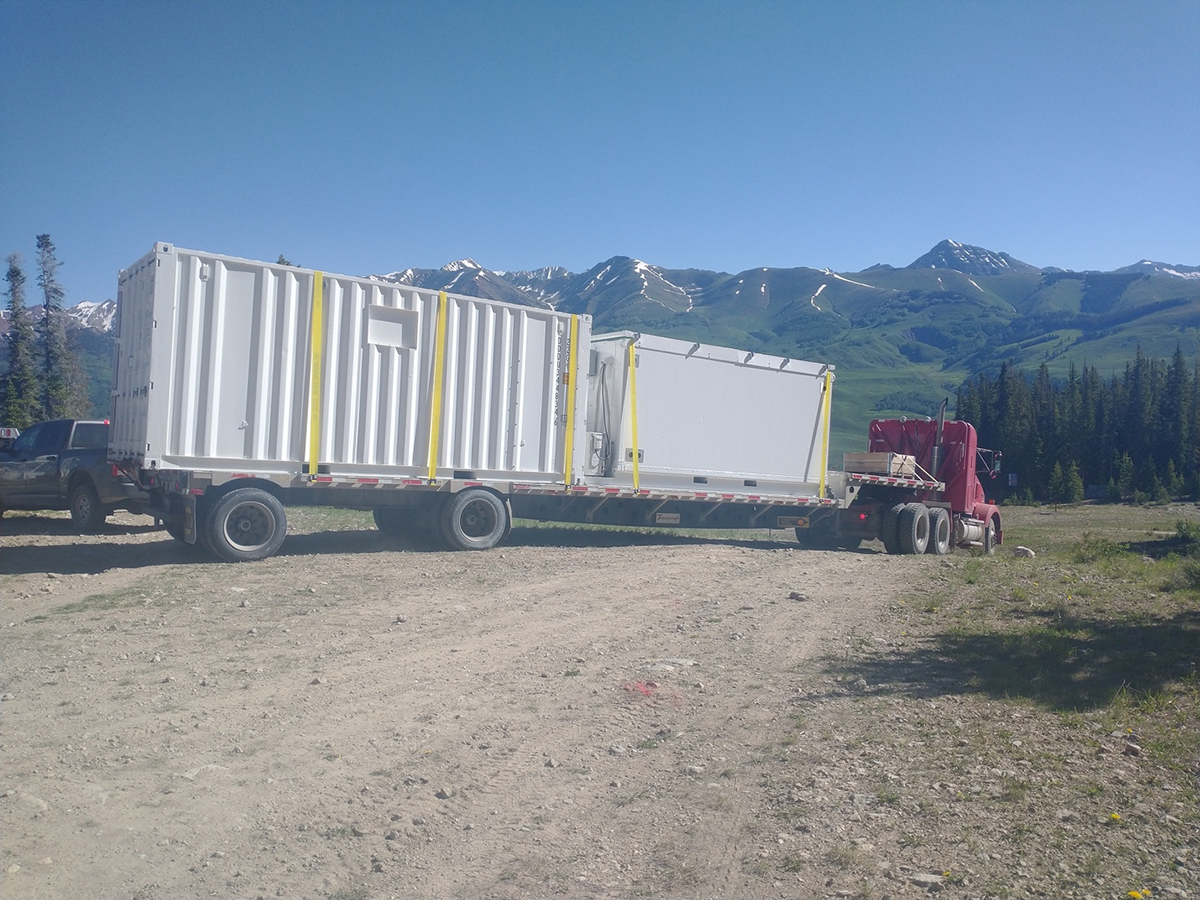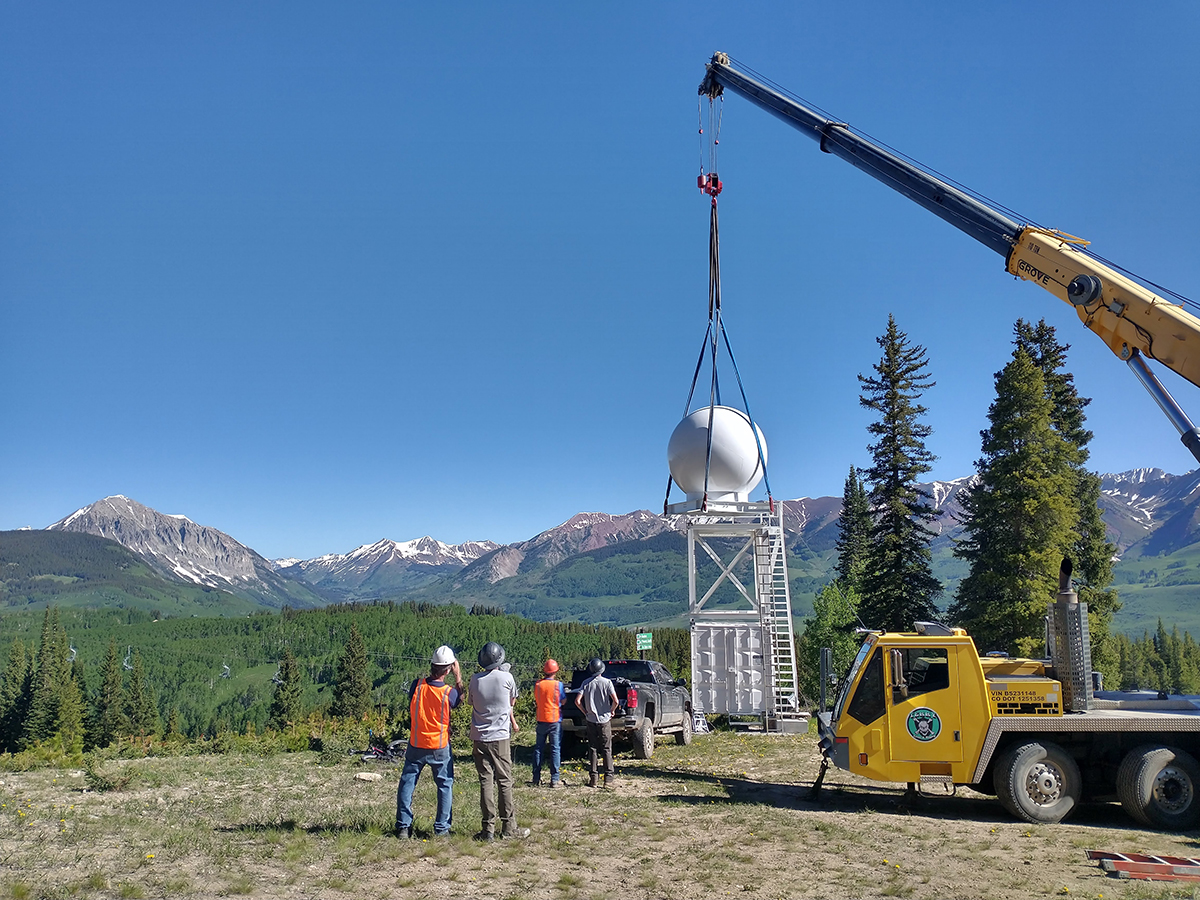After a Long Stop, ARM Instruments Await Their Next Destination
Published: 20 July 2023
Editor’s note: Hamelmann Communications technician Travis Guy, who recently supported operations of the second ARM Mobile Facility (AMF2) in Colorado, provided the following blog post.
SAIL Pack-Up: The End of a Challenging Yet Wonderful Campaign
To SAIL on a dream on a powder-filled meadow, to ride on the crest of a wild winter storm.
To work in the service of air and cloud forming, in search of the answers to questions unknown.
To be part of the movement and part of the growing, part of beginning to understand.
Aye, AMF2, the places you’ve been to,
the things that you’ve shown us, the stories you tell.
Aye, AMF2, I sing to your spirit, the techs who have served you so long and so well.
Like the lasers that shine through, you reveal all that’s new
to light up the atmosphere and show us the way.
For though we are strangers in your high-up world, to live on the land we must learn from the sky.
To be true as the wind and free as a snowflake, joyful and loving in letting it fly.
Aye, AMF2, the places you’ve been to,
the things that you’ve shown us, the stories you tell.
Aye, AMF2, I sing to your spirit, the techs who have served you so long and so well.
Adapted from Calypso
By the John Denver
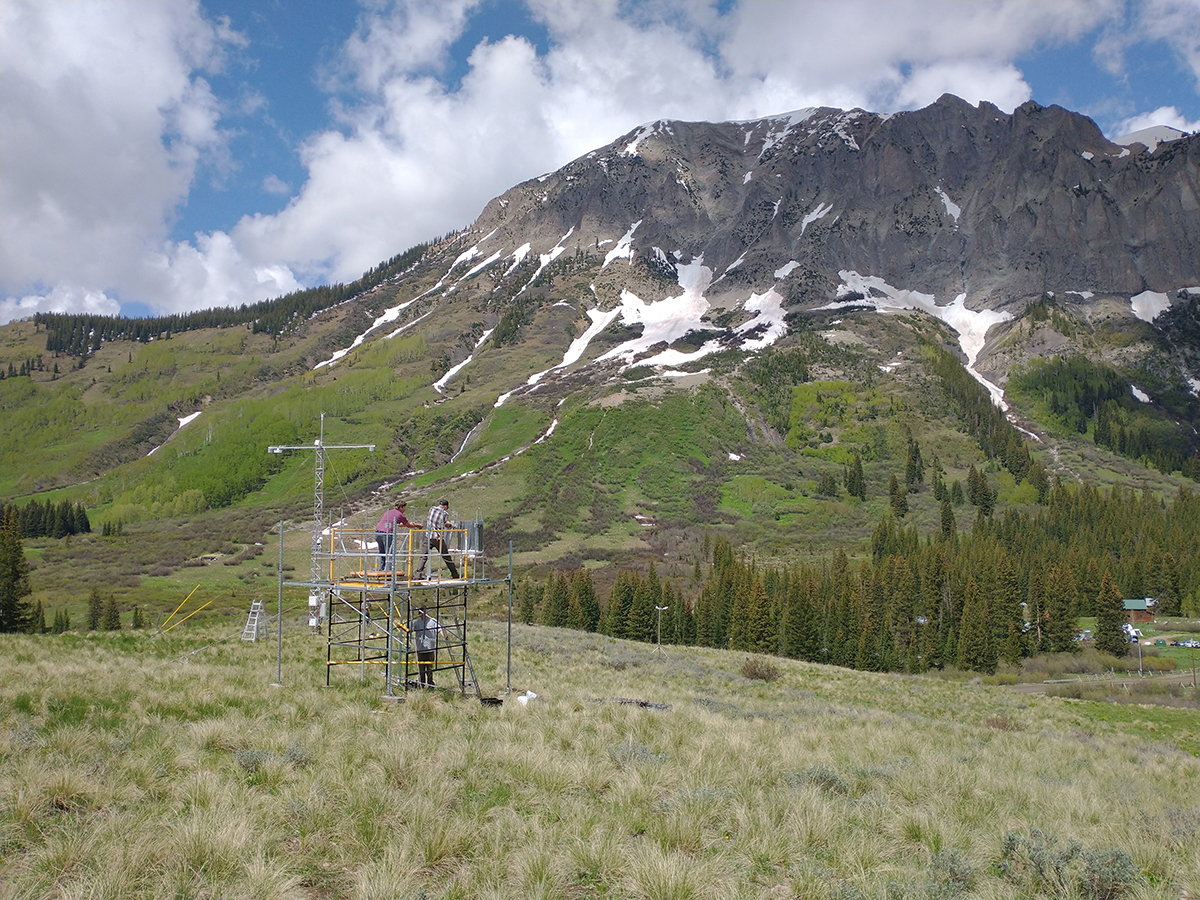
Despite rugged terrain, a bit of weather, and the ever-present altitude, it was smooth sailing for the pack-up of the Surface Atmosphere Integrated Field Laboratory (SAIL) campaign this past June.
Groups from Los Alamos National Laboratory (LANL) and Hamelmann Communications and an individual from ARM’s Eastern North Atlantic observatory—all with previous pack-up experience—joined the site technicians in Gothic, Colorado, at the Rocky Mountain Biological Laboratory (RMBL) on Friday, June 16. Hard work combined with an excellent logistics plan enabled the team to close the container doors for the final time on Thursday, June 22, only six days later!
During the first (soggy) day of pack-up, the team focused on calibrating instruments and organizing the contents and cases of the containers at the main site (M1). We also began carrying equipment down from the infamous “hill.” Several SAIL instruments and towers were located in RMBL’s research meadow, which sits on a hill above the M1 site and is accessed by a surprisingly steep and often slippery trail.
In addition, a group was able to remove the equipment from the Kettle Ponds (S3) site, located a couple of miles from M1 on a muddy and rough track.
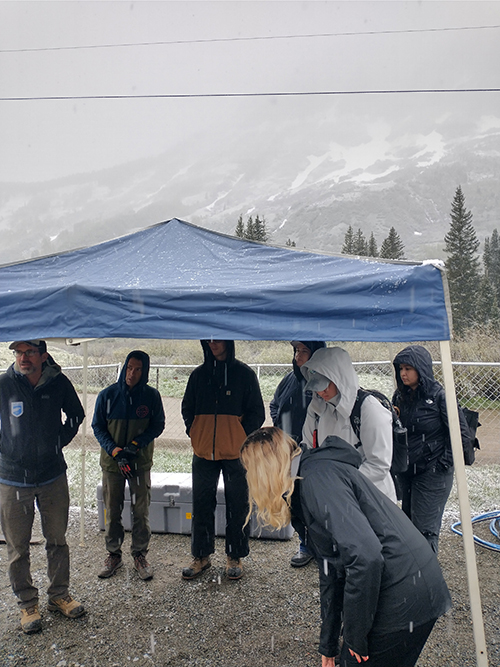
Since late October of last year, SAIL has been synonymous with snow. In what we all agreed was a fitting goodbye, Mother Nature decided to send us off with one last snowstorm as we removed the last of the instruments and equipment from the hill. The flakes were huge and beautiful, and they even accumulated throughout the day on the bright green vegetation.
Snow accumulated even deeper up at the ARM Aerosol Observing System (S2 site), which was located midway up the slope at Crested Butte Mountain Resort. A couple of mentors from Brookhaven National Laboratory joined a small crew from the pack-up group to start the calibration and pack-up process on the ski hill.
The next few days involved de-installing instruments from inside the containers as well as from their roofs; removing accessories such as air conditioners, ladders, and platforms; and organizing (and reorganizing) the containers. Eventually, everything was packed up Tetris style—tightly fitting together—and strapped down with great care.
After pack-up, cranes and flatbed trucks arrived to take the containers to LANL, where the containers will be reorganized, refit, and resupplied. In addition, many of the instruments will be inspected more closely and prepped for their next deployment.
SAIL was a great (and successful) campaign in a beautiful location full of fun challenges and no dearth of adventure. All who were associated with it will miss it. Even the wildlife appeared to be sad to see SAIL go, as red fox, elk, mule deer, marmots, and even a moose visited the site during pack-up.
CAPE-K: New Beginnings in a ‘Land Down Under’
I’m SAILing away
Set an open course for the Tasman Sea
‘Cause I’ve got to be free
Free to collect data in a place new to me
On board, we’re the site ops
So climb aboard
We’ll search for the answers
On every shore
And I’ll try, oh, ARM, I’ll try
To CAPE-K on
I look to the peak
Shimmering snow makes my memories speak
Some happy, some sad
I think of past campaigns and the fun we had
Adapted from Come Sail Away
By the Styx
However, just as the sun sets on something old and familiar, it also rises on something new and exciting.
The instruments left Gothic as SAIL instruments strapped to trucks that had to negotiate mountain passes to reach LANL. However, after they leave the lab, they will be sailing (no pun intended) on a cargo vessel across the great oceans as instruments bound for the Cloud And Precipitation Experiment at Kennaook (CAPE-K) in Tasmania.
How will the instruments enjoy the change from a cold, dry, sunny, high-altitude location to a mild, humid, rainy, coastal location within the “Roaring 40s”? Only time will tell! One thing is certain, however: They will have new stories to tell and, more important, new data to collect as they help us unlock further atmospheric mysteries!
|
|
|
|
|
|
|
|
|
|
|
|
|
|
|
|
|
|
|
|
|
|
|
|
Keep up with the Atmospheric Observer
Updates on ARM news, events, and opportunities delivered to your inbox
ARM User Profile
ARM welcomes users from all institutions and nations. A free ARM user account is needed to access ARM data.



